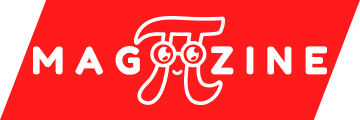Tek-102 is a foundational technology and engineering course that teaches essential digital skills and technical literacy to students from all backgrounds. This beginner-friendly program covers everything from basic computer skills and CAD software to engineering graphics and digital ethics, making it perfect for anyone wanting to build confidence in today’s tech-driven world.
What Exactly is Tek-102?
Tek-102 serves as a bridge between basic computer knowledge and more advanced technical skills. The academic course typically follows TEK-101 as a second-level entry point into technology education, representing the polysemic nature of modern technical education where one designation encompasses multiple learning pathways.
Most institutions design this intermediate-level program as a 3-unit course that blends traditional technical skills with modern technology tools. You’ll work with both manual drafting techniques and computer-aided design software. The curriculum modules usually include engineering graphics, geometric dimensioning and tolerancing (GD&T), and 2D CAD programs like AutoCAD. This combination gives you both hands-on technical drawing skills and software knowledge that employers value in entry-level positions.
The course emphasizes practical learning outcomes rather than just theory. You’ll complete real projects, work in interactive labs, and engage in group collaboration throughout the program. Unlike advanced coursework that requires extensive prerequisites, this foundational program welcomes learners from diverse backgrounds. By the end, most students finish a capstone project that applies everything they’ve learned to a real-world scenario.
How Tek-102 Works and Course Structure
The course uses a modular approach that builds skills step by step. Each lesson component tackles a central concept with hands-on practice and immediate application, reflecting modern technical education systems that prioritize experiential learning.
Course Modules and Content
Technology course content typically starts with manual sketching and orthographic projection principles. You’ll learn descriptive geometry fundamentals before moving into digital skills training. The program then introduces CAD software basics, including dimensioning, layer controls, plotting, and industry-standard drafting conventions. Most courses use AutoCAD as the primary platform, though some institutions include other professional software.
Interactive Learning Methods
Interactive lab sessions form the backbone of Tek-102. Instead of sitting through lectures, you’ll spend time working on practical exercises that mirror real workplace tasks. The hands-on experience includes creating technical drawings, learning measurement techniques, and understanding how engineering intent translates into clear, dimensioned drawings. Group projects help you practice technical communication skills that prove vital in engineering and design careers. Recent curriculum updates now include technological citizenship modules that explore digital ethics, data privacy, and sustainable technology practices.
Who Should Take Tek-102 and Why
This course works well for several different types of learners. Student eligibility is typically broad, welcoming both technical and non-technical backgrounds, making it a true interdisciplinary offering within modern degree programs.
First-year engineering students often take Tek-102 to build essential visual communication skills needed in manufacturing and architecture. Business majors use the course to understand digital tools better and improve their technology literacy. Adult learners who want to keep up with digital changes find the program especially helpful for career transitions or skill updates.
The course also appeals to professionals considering careers in CAD design, engineering drafting, or technical roles where precise drawings matter. Many students use Tek-102 as preparation for higher-level CAD courses or specialized training programs. The foundational technology skills you gain apply across multiple industries, from mechanical design to infrastructure planning. The etymology of “Tek-102” itself reflects this progression, with “Tek” derived from technology and “102” indicating advancement beyond introductory “101” level content.
Benefits and Career Advantages of Tek-102
Completing Tek-102 opens several pathways for both immediate job opportunities and continued education. The practical tech skills you develop have direct workplace applications and strong positive connotations in today’s job market.
Digital skills programs like Tek-102 improve your employability in technical fields. You’ll gain competence in orthographic projections, sectional views, and auxiliary drawings – key skills for communicating engineered parts and assemblies clearly. The CAD training portion teaches you industry-standard software that most engineering and design companies expect employees to know. This technical proficiency represents a significant departure from basic computer literacy courses.
Organizations benefit when their workforce completes corporate training programs like Tek-102. Teams with better technology literacy tend to innovate more effectively and work more efficiently. The course aligns with current online education trends, offering flexible, self-paced learning options that fit around work schedules.
The combination of manual drafting skills and software proficiency sets you apart from candidates who only know one approach. This dual competency makes you more valuable to employers who need workers who can adapt to different project requirements and client preferences. Recent industry surveys show that foundational technical training significantly improves retention rates and career advancement opportunities.
Challenges and Common Learning Obstacles
Like any technical course, Tek-102 presents certain learning challenges that students should expect and prepare for, though its beginner-friendly design minimizes these hurdles compared to specialized programs.
Technical Drawing Difficulties
The biggest hurdle many students face is adapting to technical drawing conventions and engineering concepts. Moving from regular drawing to precise, measured technical sketches requires practice and patience. The geometric dimensioning and tolerancing (GD&T) portion can feel overwhelming at first, especially for students without prior engineering exposure.
Software Learning Curves
CAD software learning curves also challenge some students. AutoCAD and similar programs have many features and tools that take time to master. Students often feel frustrated when their first attempts don’t produce professional-looking results. However, most people find that consistent practice and hands-on labs help them build confidence quickly.
Time management becomes crucial since Tek-102 combines multiple skill areas. You’ll need to balance manual sketching practice with computer lab time while keeping up with curriculum modules and project deadlines. Setting aside regular study time for both drawing practice and software tutorials helps most students succeed. Modern online platforms like Coursera, Udemy, and LinkedIn Learning now offer supplementary resources that complement traditional classroom instruction.
Real-World Applications and Industry Use
The skills you learn in Tek-102 transfer directly to numerous engineering applications and professional settings across multiple industries, representing core technical competencies valued in the modern workforce.
Manufacturing and Engineering Applications
Manufacturing companies rely heavily on technical drawings to communicate product specifications to production teams. Your ability to create clear, accurate drawings helps prevent costly mistakes and ensures quality control. Architecture firms use similar skills for building plans and construction documents. Infrastructure projects like bridges and roads depend on precise technical drawings for safety and compliance.
Case studies from recent graduates show how Tek-102 skills apply in unexpected ways. Marketing professionals use CAD knowledge to better communicate with engineering teams about product features. Project managers leverage their understanding of technical drawings to coordinate between design and manufacturing departments more effectively.
Emerging Technology Integration
The course also prepares you for emerging technology trends in industry. Many companies now combine traditional CAD work with 3D modeling, 3D printing, and digital manufacturing processes. Your foundational skills make it easier to adapt to these advancing technologies as they become more common in workplace environments. The integration of AI-assisted design tools and cloud-based collaboration platforms represents natural extensions of the systems thinking approach taught in Tek-102.
How Tek-102 Compares with Alternative Courses
Understanding how Tek-102 differs from similar programs helps you choose the right educational path for your goals, especially given the polysemic nature of technical education offerings today.
Most comparable courses focus either on manual drafting or CAD software independently. Tek-102 excels by integrating both approaches alongside GD&T training, offering a more comprehensive foundation. This makes it both deeper and more career-ready than courses that limit scope to just computer software or sketching techniques.
Some online education platforms offer basic CAD training, but these typically lack the engineering context that Tek-102 provides. You miss the important connection between technical communication principles and software tools. Similarly, traditional drafting courses may not include modern software training that employers expect.
Digital skills programs from other institutions sometimes emphasize general computer literacy over specific technical applications. While these courses help with basic technology confidence, they don’t prepare you for engineering or design careers like Tek-102 does. The specialized focus on technical drawing and CAD software gives you more targeted, job-relevant skills. Advanced programs like TEK-201 or TEK-301 build upon this foundation but require the intermediate-level competency that Tek-102 provides.
How to Access and Enroll in Tek-102
Getting started with Tek-102 typically requires minimal prerequisites, making it accessible to students from various backgrounds and reflecting its role as a foundational component of broader technical education systems.
Most community colleges, technical schools, and universities offer Tek-102 or equivalent courses. E-learning platforms like Coursera, Udemy, and LinkedIn Learning also provide online versions that you can complete at your own pace. Some programs are free, while others offer certificates upon completion.
Online platforms give you flexibility to learn from anywhere and revisit lessons as needed. You’ll usually have access to instructor support through forums or direct messaging. Many programs also provide trial access to CAD software, so you don’t need to purchase expensive licenses upfront.
Before enrolling, check the specific software requirements and ensure your computer can run the necessary programs. Most courses provide detailed technology requirements lists and technical support to help you get set up successfully. Some institutions offer computer lab access if you don’t have adequate equipment at home.
Corporate training programs often include Tek-102 as part of professional development initiatives. If your employer offers tuition assistance or skills training benefits, this course might qualify for funding support. Check with your human resources department about available educational opportunities and reimbursement policies. The interdisciplinary applications of Tek-102 skills make them valuable across departments, not just technical roles.
Tek-102 provides essential technical literacy skills that bridge the gap between basic computer knowledge and advanced engineering capabilities. Whether you’re starting a career in design, looking to improve your technical communication skills, or simply wanting to understand how the digital tools around you work, this foundational technology course offers practical, immediately applicable knowledge. The combination of manual drafting techniques, CAD software training, and engineering principles creates a solid foundation for continued learning and career growth in our increasingly technical world.
Note: Research indicates that “Tek-102” has multiple industry applications, including educational courses, industrial equipment designations, and specialized technical programs, demonstrating the polysemic nature of technical terminology in modern professional contexts.












